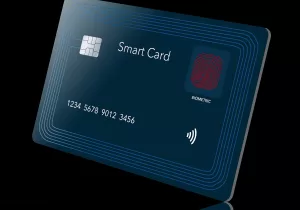
Biometric cards have progressed significantly since their early conception. In the current environment, their relevance is steadily growing because they offer a secure and convenient solution for identification and authentication. However, addressing privacy concerns and ensuring responsible development will be key for their long-term success.
Antonio D’Albore, vice president of sales at Zwipe and a member of the International Card Manufacturers Association (ICMA), shares insights on why biometric cards are relevant in today’s environment and introduces their evolution.
Relevancy of Biometric Cards
The relevancy of biometric cards in today’s environment depends on several factors. While there are concerns about cost, privacy, technology and adoption that need to be addressed, there are advantages in the current environment including:
- Increased security: Fingerprint sensors or other biometric authentication methods can make it more difficult for unauthorized individuals to use the card, compared to using a PIN alone. This is especially relevant in the current environment where contactless payments are increasing, and security concerns persist.
- Touchless payment: In the wake of the COVID-19 pandemic, contactless payments became more popular due to hygiene concerns. Biometric cards offer a touchless authentication method for both contactless and chip-and-PIN transactions.
- Reduced reliance on PINs: PINs can be forgotten, stolen or phished, while biometric data is unique to each individual. Biometric cards eliminate the need to remember a PIN, improving convenience and security.
- Potential for broader applications: Biometric cards could be used for other purposes beyond payment, such as physical access control or identity verification. This could offer additional convenience and security in various situations.
Evolution of Biometric Cards
During the late 1990s, thanks to the evolution of embedded systems, the security industry expanded the use of fingerprint authentication into physical and logical access control systems. At the time, a typical setup would have involved a fingerprint scanner mounted into a wall-mounted access control reader at an entry point. Some examples include an office lab door, a desktop fingerprint scanner linked to a host or a workstation storing sensitive business data.
To gain access, users were required to authenticate themselves by scanning their fingerprint into the scanner. Subsequently, the scanner transmitted the image to the host, whether locally or on the network. The host then converted the bitmap image into a digital template known as the probe template and initiated a matching process against the database of all registered user templates. If a match was detected, access would be granted.
Organizations implementing those systems faced a twofold problem including:
- Risks associated with potential attacks to the matching software and biometric database
- Challenges with newly developing local and international personal biometric data laws and regulations
Users, on the other hand, were sometimes uncomfortable leaving their biometric data in the hands of a third party that they couldn’t control. The cost of those systems also was an issue. Simply think of an office building with thousands of doors, each equipped with a biometric access control reader and networked with a dedicated biometric matching host.
A mitigating solution was found using the latest generation of smartcards, which had enough computing power and memory space to perform the biometric match into the secure environment of a secure element. In practical terms, the system would no longer have a need for a centralized templates database. This is due to a small set of user biometric templates that were created during user enrollment being pre-loaded onto each user’s card.
The match-on-card concept also reduced operational costs and addressed privacy concerns by storing biometric templates directly on the card, placing control in the hands of the user.
Despite the welcomed novelty, this kind of system had relatively low penetration in the industry due to the following factors:
- Impact on organizations’ capital expenditures related to purchase
- Installation and maintenance of fingerprint scanners
- Hardware and custom software needed to generate the biometric template by pushing it into the card and getting back the matching outcome
Advancements in technology, stronger data protection regulations and increased user acceptance will play a role in determining the future relevance of biometric cards.
If you’re interested in continuing on this fascinating journey on the biometric technology applied to the smartcard, attend the presentation at the ICMA EXPO on May 15 at 11:30 a.m. See more of the agenda at ICMA.com.
More Insights on Card Trends
For more than 30 years, ICMA has represented the interests of the card manufacturing industry—which includes manufacturers, personalizers, issuers and suppliers—as its leading global association.
Throughout the year, ICMA members have the opportunity to share insights and knowledge by giving presentations during ICMA webcasts and events. The association’s main event is its annual Card Manufacturing & Personalization EXPO. The 2024 EXPO will take place from May 13-16 in Orlando, Florida.
ICMA offers regular educational opportunities, including ACE-Manufacturing, ACE-Personalization and ACE-Advanced Technologies training and exams at the ICMA EXPO. ICMA also offers ACE-Commercial training, which provides sales, marketing, customer service and other key personnel at ICMA member companies with the opportunity to learn the fundamentals of card manufacturing.
Learn more about the benefits of ICMA membership.
